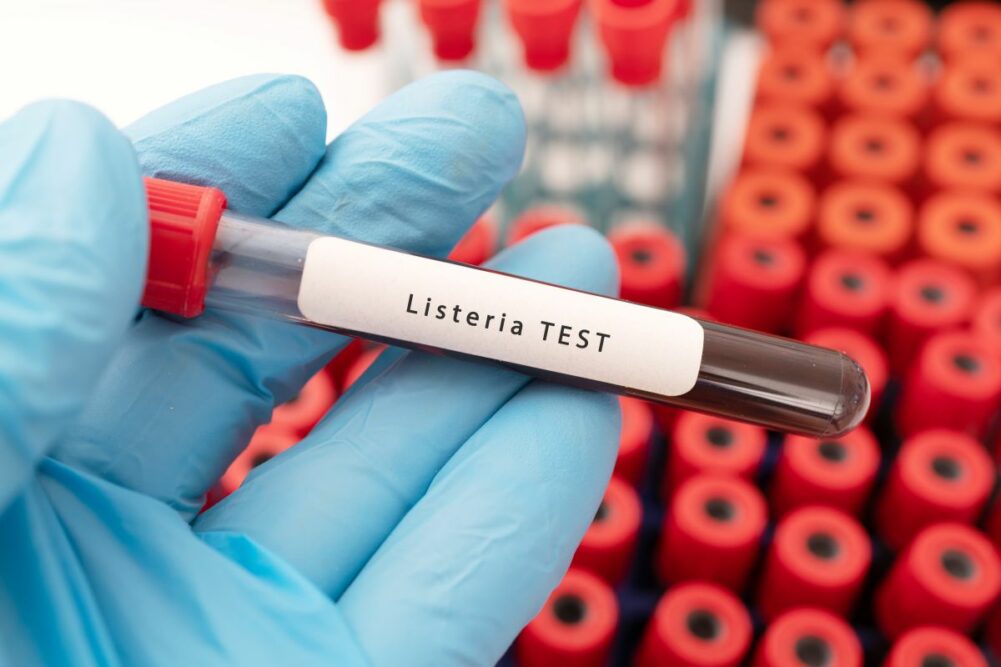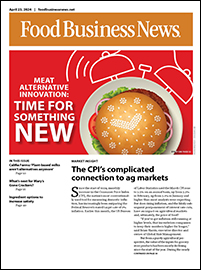KANSAS CITY — Determined to continue to reduce the incidence of foodborne illnesses, regulatory agencies such as the US Department of Agriculture (USDA) and the US Food and Drug Administration (FDA) have moved to strengthen oversight of food manufacturers, particularly meat and poultry processors.
In 2024, the USDA made strides in Salmonella and Listeria prevention, while the FDA launched its revamped Human Foods Program that is focused on improving its risk management capabilities. Industry stakeholders know the policy and organizational pivots have carried over into 2025.
Outbreaks of Listeria monocytogenes linked to ready-to-eat meat and poultry products and deli meats generated headlines during 2024. Most recently, Yu Shang Food Inc. of Spartanburg, SC, initiated a recall of ready-to-eat (RTE) meat and poultry products when Food Safety and Inspection Service (FSIS) testing confirmed the company’s products were contaminated with Listeria and making consumers sick.
As of Dec. 5, 2024, 19 people from eight states had been infected with the outbreak strains of Listeria, according to the Atlanta-based Centers for Disease Control and Prevention (CDC). In California, a mother and her twins were sick and both infants died. Listeria was found in a sample from the mother and from one of the twin infants, however it could not be found in a sample from the other infant. As a result, only the mother and one twin were included as confirmed cases in the outbreak.
In Tennessee, a mother and her infant were sick and her infant died. And, of 19 people with information available, 17 were hospitalized.
Prior to the Yu Shang Food outbreak, public health officials linked liverwurst and other deli meats processed at a Boar’s Head Provisions plant in Jarrett, Va., to 61 cases of listeriosis across 19 states. The CDC reported 10 deaths and 60 hospitalizations linked to the outbreak.
In response, the FSIS announced new efforts aimed at strengthening the agency’s oversight of meat, poultry and egg processing facilities. The agency detailed new measures to be implemented within 30 days of the announcement that came on Dec. 17. The changes fall into three categories: enhancing the agency’s science-based approach to mitigate foodborne pathogens, with a key focus on Listeria monocytogenes; improving training and tools for its inspection workforce; and evolving its oversight of regulated facilities, with an emphasis on data review and state inspection agreements.
The FSIS also is adding broader Listeria species testing to all samples of RTE products, environmental and food contact surfaces, a move the agency expects will help provide more information about the effectiveness of a facility’s sanitation program and can signal to FSIS if follow up is needed.
Additional actions intended to strengthen FSIS’ inspection and oversight include:
Equipping inspectors with updated training and tools to recognize and respond to systemic food safety issues. Under the initiative, FSIS will update its instructions and training for food safety inspectors to better equip the workforce to recognize and highlight systemic problems in a standardized way.
Agency inspectors will receive updated instructions and training, and FSIS field supervisors will routinely review the instructions with inspectors to ensure full understanding and appropriate application. Inspectors also will receive supplemental Listeria monocytogenes control training intended to help strengthen inspectors’ understanding of the regulatory requirements in FSIS’s Listeria Rule and how to verify establishments have established and implemented food safety systems that comply with the requirements.
The FSIS also will conduct Food Safety Assessments (in-depth food safety reviews) at RTE meat and poultry facilities. In fiscal 2025, FSIS is prioritizing completion of Food Safety Assessments at RTE meat and poultry facilities that rely exclusively on sanitation measures to control for Listeria. The reviews will provide information about the plants individually and collectively and may inform future policy or process changes to target the microorganism.
FSIS field supervisors also will conduct in-person, follow-up visits when systemic issues are identified during a Food Safety Assessment.
FSIS inspectors will verify specific Listeria monocytogenes-related risk factors at RTE facilities weekly. The risk factors include changes in physical plant modifications, such as new construction; indicators of sanitation problems, such as condensation, roof leaks, damaged equipment, or cracked floors; and Listeria species or Listeria monocytogenes positive test results from company testing. FSIS district offices, agency field supervisors and inspectors will review, analyze and consider the weekly data from each facility to determine if there are systemic issues that warrant further action, such as a Food Safety Assessment, intensified sampling, or enforcement steps.
Finally, FSIS will revise establishment-review alert triggers. A monthly list of facilities with higher rates of noncompliance related to public health is one significant criterion that will be used to guide a district office’s decision to conduct a Public Health Risk Evaluation (PHRE), which typically precedes a Food Safety Assessment. The list is generated using an algorithm. Using additional data from the new weekly verification of Listeria monocytogenes-related risk factors, FSIS intends to update its algorithm and triggers to better identify high-risk facilities.
FSIS said the agency is continuing to identify additional steps that would improve control of Listeria monocytogenes, dependent on funding availability.
Rethinking the status of Salmonella
In another significant policy change, the FSIS announced Salmonella would be declared an adulterant in raw breaded stuffed chicken products when the pathogen exceeds a specific threshold. FSIS first announced its intention to declare Salmonella an adulterant in 2022 as part of a proposed regulatory framework intended to help control contamination in poultry products. The agency finalized the Salmonella policy in April 2024.
FSIS will consider to be adulterated any raw breaded stuffed chicken products that include a chicken component that tested positive for Salmonella at 1 colony forming unit (CFU) per gram or higher. The agency said it will implement verification procedures, including sampling and testing of the chicken component of the product prior to stuffing and breading.
Breaded stuffed raw chicken products are pre-browned and may appear cooked. However, the items contain raw vegetables, butter, cheese, or meat such as poultry or ham.
FSIS reasoned consumers may have difficulty determining an accurate internal temperature of the products because they contain multiple ingredients that may cook at different rates. Industry stakeholders argued that not all Salmonella serotypes impact public health.
The US Poultry & Egg Association said research projects are underway to determine whether reductions in foodborne illness can be achieved by regulating Salmonella and poultry using metrics that account for different impacts of specific strains, or high levels on the risk of the disease.
FDA getting food-specific
The FDA’s Human Foods Program (HFP) officially launched Oct. 1, 2024. The program, intended to protect and promote public health through science-based approaches, centralizes the agency’s risk management activities into three main areas that run on parallel tracks: microbiological food safety, food chemical safety and nutrition.
The Office of Microbiological Food Safety will work to advance strategies to prevent pathogen-related foodborne illness. The Office of Food Chemical Safety, Dietary Supplements, and Innovation will focus on food chemical safety and dietary supplement policy and coordinate on regulatory and scientific issues for foods developed through implementing innovative technologies.
And the Nutrition Center of Excellence will focus on nutrition science, policy, and initiatives to help reduce diet-related chronic diseases, improve health equity, and ensure the nutritional adequacy and safety of infant formula.
The Human Foods Program was born from restructuring FDA’s food program by combining the Center for Food Safety and Applied Nutrition, Office of Food Policy and Response and certain aspects of the Office of Regulatory Affairs.



